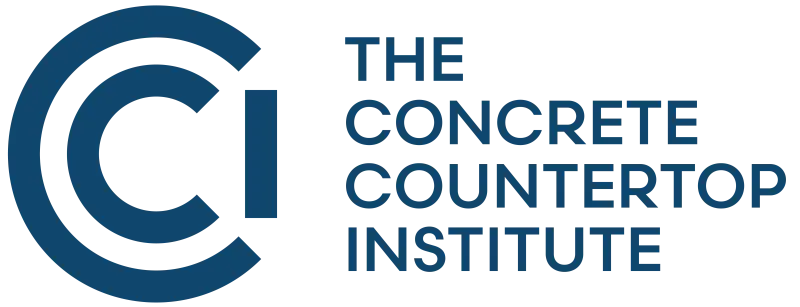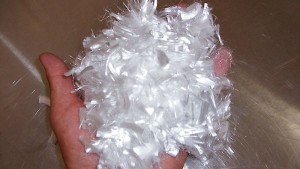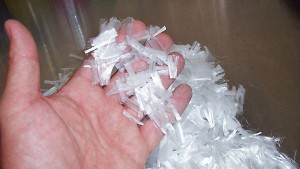Answer: No.
First, let’s understand what “monofilament” means. Fibers can be configured in single strands (monofilament) or bundles (fibrillated). Many types of fibers that are sold in fibrillated configuration have fiber bundles that are designed to disperse in the mix – break up into single fiber strands.
GFRC fibers are different. The fiber bundles are meant to stay bundled (about 200 filaments per bundle with 19mm “fibers”). Each bundle is bonded together so that the filaments remain grouped during mixing. Here’s why:
With monofilament fibers, each fiber is exposed to the concrete’s cement paste and is well bonded to the matrix. While this seems ideal, it creates a composite that results in stiffer, less elastic material.
GFRC fibers, on the other hand, remain in a bundle. This results in a stiffer fiber grouping that maintains the fiber’s orientation even when the overall length gets very long compared to the diameter of the individual fiber filament. Long, stiff fibers (or fiber groupings) are far more effective than long, thin, floppy fibers that fold over and ball up.
Fiber Bundle Properties
In addition, the fiber bundles themselves are engineered to create a strong, yet flexible concrete. The spacing between each filament is about 0.1 microns, or 1/10,000,000 of a meter. That’s 1000 times smaller than the average diameter of a human hair! The spacing between the filaments is too small to let cement particles penetrate, but it is large enough to let the polymer enter.
Capillary action draws water and polymer into the dry fibers as they’re mixed into the concrete. By filling the spaces between the filaments with polymer, two things are achieved:
- The polymer blocks any mineral growth from entering the fiber bundle.
- The stretchy polymer bonds the inner filaments to the filaments at the outside of the bundle.
Only the outside filaments are in contact with the concrete matrix, but the inner filaments are not. This is important because:
- If the spaces between the filaments were to become filled with rigid crystalline mineral deposits (which occurs during concrete hydration over time), all of the filaments would be rigidly bonded together and the fiber would act as a single, thick fiber bar.
- Rather, the stretchy polymer allows the inner filaments to move relative to the outer filaments, yet still bear some of the load.
In a way, the polymer and glass fiber filaments create mini bungee cords within the concrete, giving GFRC great flexibility.
The Importance of Surface Area
As explained above, the surface area of fiber which is exposed to the cement paste is important. This is true for a number of concrete ingredients. For example, the surface area of pigment and how well it disperses in the mix are important factors in creating the final color. Surface area is an important concept that plays a role in mix design and adjustments.
Other Considerations about Fibers
Please note, this article discusses only the difference between monofilament and fibrillated fibers. There are many other important characteristics relevant to fibers. For example, depending on the material the fiber is made of, the fiber may be hydrophobic (repel water and therefore have no effect on mix water requirements) or hydrophilic (attract water and therefore affect mix water requirements).
Here are some good articles by Concrete Construction magazine about the broader topic of various fiber chemistries and configurations. While they don’t cover GFRC, they give a good overview of other types of fibers.
- “Emerging as true crack-control reinforcement, ‘structural’ fibers have gained a stronger foothold in concrete” – June 2005


